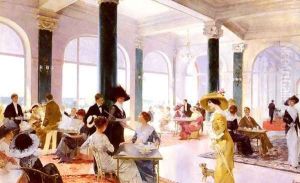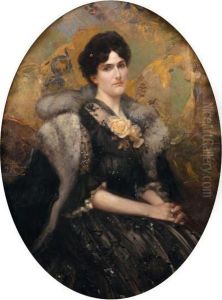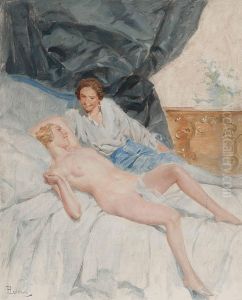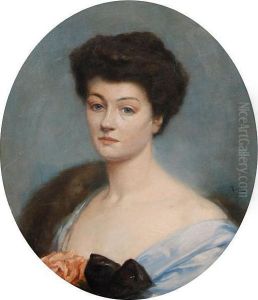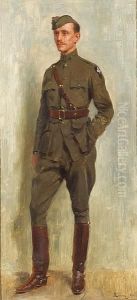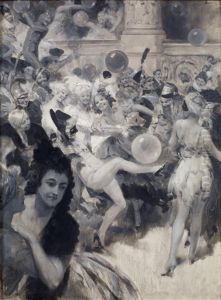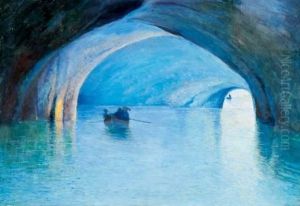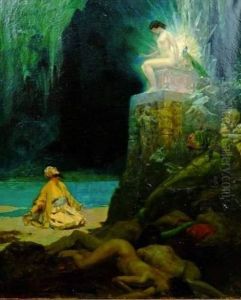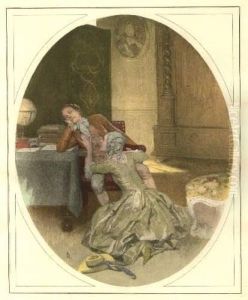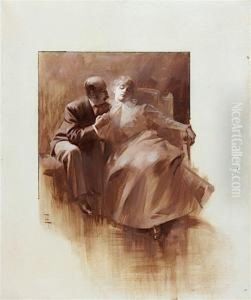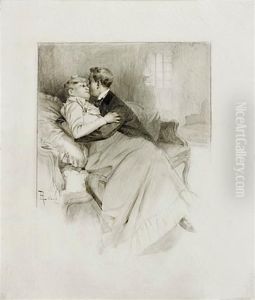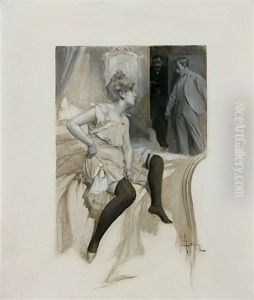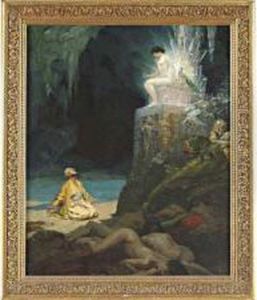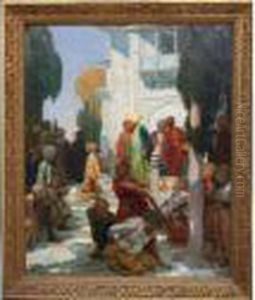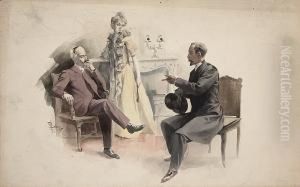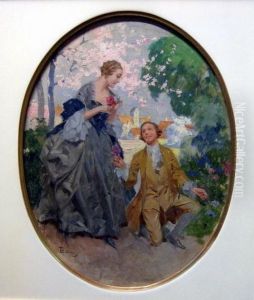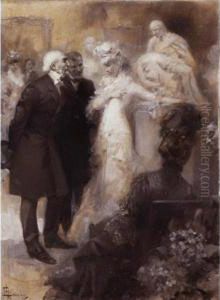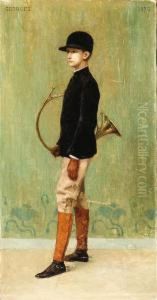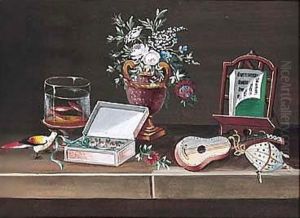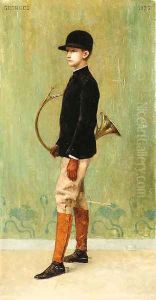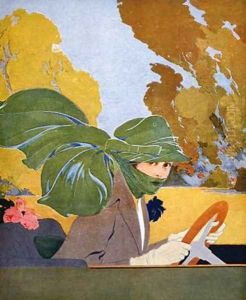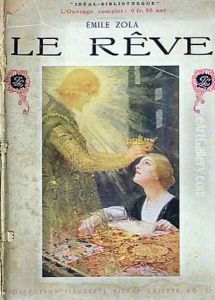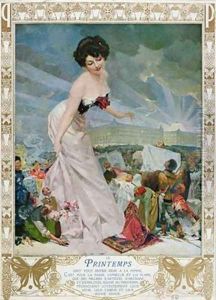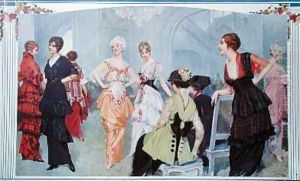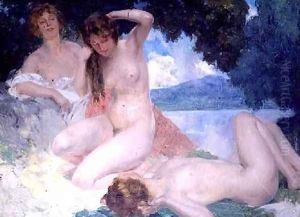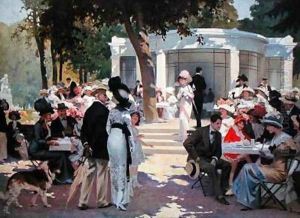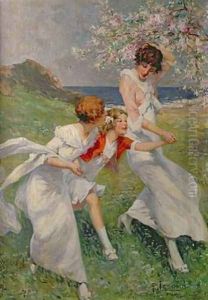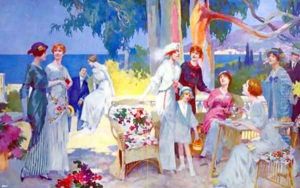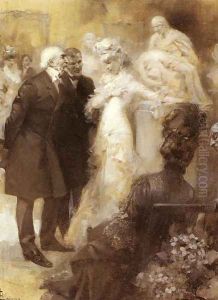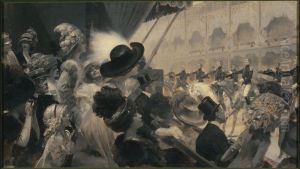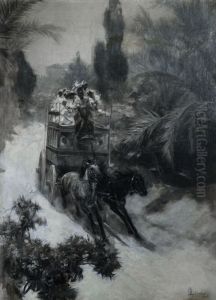Rene Lelong Paintings
René Lelong was a French painter, illustrator, and engraver born on October 1, 1871, in Puteaux, France. He was known for his landscapes, portraits, and depictions of military life, as well as for his involvement in the illustration of books and magazines.
Lelong studied at the École des Beaux-Arts in Paris under the guidance of Léon Bonnat and Fernand Cormon, two prominent French artists of the time. His early work was influenced by the academic style of painting, which was prevalent in the 19th century. However, over time, Lelong's style evolved, and he began incorporating elements of Impressionism and Post-Impressionism into his work.
During World War I, Lelong served in the French Army and was assigned to the Camouflage Division due to his artistic skills. His experiences during the war had a profound impact on his art. He produced a series of works depicting soldiers and wartime scenes that were both poignant and respectful of the subjects. These works contributed to his recognition and popularity.
Lelong was also noted for his illustrations, which appeared in various publications. His illustrations for books ranged from classical literature to contemporary works of his time. He was involved in the creation of posters and postcards, which were popular means of communication and advertisement during the early 20th century.
After the war, Lelong continued to paint and exhibit his works. He participated in several exhibitions, including the Salon des Artistes Français, where he regularly displayed his paintings. His contributions to art were acknowledged when he was awarded the Legion of Honour, France's highest order of merit for military and civil merits.
René Lelong passed away on March 6, 1933, in Paris. His works remain a part of French artistic heritage and are collected and displayed in various museums and galleries. They serve as a testament to his skill as an artist and his ability to capture the essence of his time.
